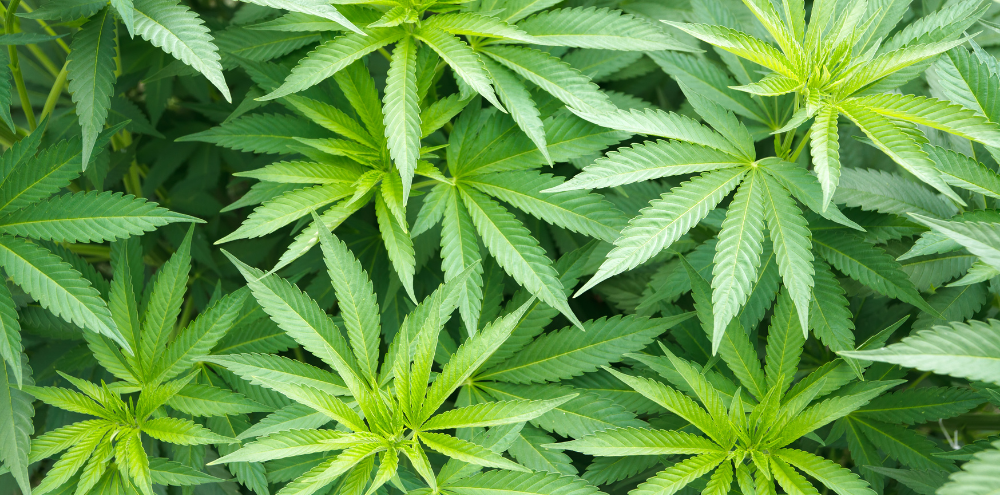Whether or not you enjoy the benefits of the cannabis plant, your body still produces and utilizes endocannabinoids as part of the human endocannabinoid system (ECS). It’s true! Humans are built with the ability to produce cannabinoid-like molecules that bind to receptors in our body, which affect our health in a variety of different ways.
If you’re feeling a little confused, don’t worry, because in this blog, we want to help you understand exactly what the endocannabinoid system is, how it works, and how it impacts your health.
What is the endocannabinoid system?
The ECS is a system that exists within all of us naturally. In fact, it’s thought to be an important part of our health. This is because researchers have found that the ECS may play a role in homeostasis. Homeostasis is the process which keeps all our body systems in check and balance. So, for example, if your blood pressure increases, your heart beat will slow down to reduce blood pressure. If your blood pressure decreases, the heart will pump faster to increase pressure. No one has to tell it what to do, but homeostasis means that the body will automatically seek balance and adjust the body’s systems to restore balance.
Back to endocannabinoids. This system is made up of endocannabinoid molecules that we produce internally, endocannabinoid receptors, and endocannabinoid enzymes that break down circulating endocannabinoid molecules. And of course, we know it interacts with any cannabinoids that we may ingest from the cannabis plant.

Ultimately, there is lots to discover about the ECS, but let’s go through what is known about this fascinating part of our body!
Known Endogenous Cannabinoids
There are two endocannabinoids, also known as endogenous cannabinoids, known to researchers. Endogenous means that these are molecules we produce ourselves in the body. The two endocannabinoids are anandamide (AEA) and 2-arachidonoylglyerol (2-AG).
AEA is often known as the “bliss molecule”. Anandamide is roughly translated from the Sanskrit word, ‘ananda’, which means ‘bliss’ or ‘joy’. It is known to help us maintain homeostasis, by regulating our inflammatory response and signaling of neural pathways in the nervous system. [2] Additionally, AEA is also thought to play a role in mood enhancement, pain management, appetite, and fertility. [3-5]
2-AG has some similar effects as AEA, but is found in much higher concentrations, especially in the brain. Like AEA, researchers have found that 2-AG may be involved in regulation of inflammation, food intake, pain sensation, and mood, but it also may be related to locomotor activity, learning and memory, addiction, and reward. [6]
Endocannabinoid receptors

Researchers have identified two main endocannabinoid receptors. Cannabinoids, whether they are made by our bodies, or whether we ingest them, bind to these receptors and cause action in the body. Let’s review the two receptors that we are currently familiar with:
- CB1 receptors are found in the brain and central nervous system, and are thought to be involved in mood, thought, emotion, pain, and movement.
- CB2 receptors are found throughout the immune system. These receptors may be more closely linked to inflammation. [1]
One quick side note about cannabinoids and endocannabinoid receptors – while THC binds to both the CB1 and CB2 receptors in our body, scientists believe that CBD interacts with the ECS in a slightly different way. One common theory is that CBD prevents circulating endocannabinoids, AEA and 2-AG, from breaking down, allowing them to act in our body for a longer period of time. Others believe that there may be additional receptors we have yet to discover. [8]
How the endocannabinoids affect our health
The ECS is often thought to influence many different areas of our health. This includes learning and memory, executive function decision making, sensory and motor responsiveness, and emotional reactions, as well as feeding and other homeostatic processes. It does so by the action of the endocannabinoid AEA and 2-AG.
However, there is some preliminary evidence to suggest that endocannabinoid deficiency can occur, known as clinical endocannabinoid deficiency (CECD). Researchers theorize that this may play a role in conditions such as migraine headaches, fibromyalgia, irritable bowel syndrome, and more. [7] However, because our body makes endocannabinoids as we require them, scientists have had a hard time determining what an ‘ideal level’ of AEA and 2-AG would be.
While it’s true that we have a basic understanding of the endocannabinoid system, it is clear that we still have much to learn. However, it’s important to know how cannabinoids, both endogenous and cannabis-based, affect us (and how they may benefit us) on a deeper level.
How CBD helps the ECS
It’s true that we do have natural cannabinoids within our bodies that do their best to keep the homeostasis within the ECS and the rest of your body. But as mentioned above, a deficiency can occur, resulting in an imblance through several important bodily systems. This is where taking a supplement like CBD comes in.
Many researchers believe that taking CBD helps your body strengthen the endocannabinoids you do have while standing in for the endocannabinoids you may be missing. What’s incredible is that CBD doesn’t directly bind to CB1 and CB2 receptors, but can help activate them, though researchers still aren’t fully sure how. Additionally, CBD seems to react to other receptors for further balance, and researchers aren’t even sure if they’ve discovered all of the receptors to which CBD binds.
What is known, though, is that CBD can help bring balance to the ECS. Further research is needed to fully understand how. But the important thing is that it’s helping people with pain, sleep, mental health, and more.
Trying CBD for yourself
If you want to see what it’s like to find homeostasis within your body, SomaLeaf is here to help! Our Micelle Liposomal CBD Turmeric formula is designed to actually be abosrbed by your body so that your systems can take up the powerful compound of CBD (and added turmeric) so your whole body can function at its best.
But this isn’t even all our formula can do for you…
Click Here To Learn More About How CBD Turmeric Can Benefit You
Citations
- Zou S, Kumar U. Cannabinoid Receptors and the Endocannabinoid System: Signaling and Function in the Central Nervous System. Int J Mol Sci. 2018;19(3):833. Published 2018 Mar 13. doi:10.3390/ijms19030833
- Bennett, Patrick. “Meet the ‘Bliss Molecule’ Anandamide, a Cannabinoid Your Body Produces.” Leafly, 28 July 2020, https://www.leafly.com/news/science-tech/meet-bliss-molecule-anandamide-cannabinoid
- Dincheva, I., Drysdale, A., Hartley, C. et al. FAAH genetic variation enhances fronto-amygdala function in mouse and human. Nat Commun 6, 6395 (2015). https://doi.org/10.1038/ncomms7395
- Mona R. El-Talatini, Anthony H. Taylor, Justin C. Konje, Fluctuation in anandamide levels from ovulation to early pregnancy in in-vitro fertilization-embryo transfer women, and its hormonal regulation, Human Reproduction, Volume 24, Issue 8, August 2009, Pages 1989–1998, https://doi.org/10.1093/humrep/dep065
- Dietrich A, McDaniel WFEndocannabinoids and exerciseBritish Journal of Sports Medicine 2004;38:536-541.
- Marc P. Baggelaar, Mauro Maccarrone, Mario van der Stelt. 2-Arachidonoylglycerol: A signaling lipid with manifold actions in the brain, Progress in Lipid Research, Volume 71, 2018. Pages 1-17, ISSN 0163-7827, https://doi.org/10.1016/j.plipres.2018.05.002.
- Russo, Ethan B. “Clinical Endocannabinoid Deficiency Reconsidered: Current Research Supports the Theory in Migraine, Fibromyalgia, Irritable Bowel, and Other Treatment-Resistant Syndromes.” Cannabis and cannabinoid research vol. 1,1 154-165. 1 Jul. 2016, doi:10.1089/can.2016.0009
- Raypole, Crystal. “Endocannabinoid System: A Simple Guide to How It Works.” Healthline, Healthline Media, 17 May 2019, https://www.healthline.com/health/endocannabinoid-system#cbd.





